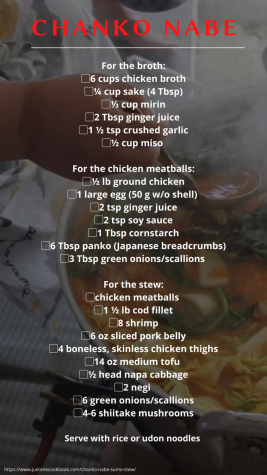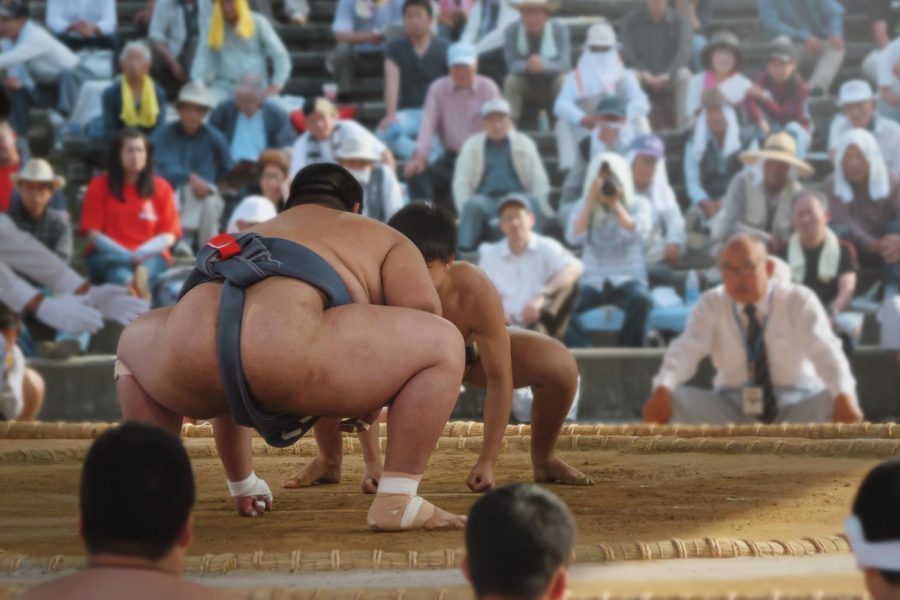Each day, 100 sushi rolls are completely demolished, 10 bowls of an incredibly nutrient-dense stew are inhaled, and another five bowls of rice are scarfed down. He weighs 600 pounds, is a pro athlete, and is in remarkable shape. He is known as the world’s largest athlete. He is a sumo wrestler.
Sumo, a 2,000-year-old Japanese martial art, is steeped in rigid tradition and highly revered in Japan as the national sport. However, in America, most people are only exposed to sumo wrestling through silly-looking inflatable sumo suits as part of festivities.
Andrew Freund, a skinny white male with a stubbled brown beard, wants to be the man to educate the world on the art of sumo. He has made it his mission to bring sumo to America in a big way.
Freund was first exposed to sumo wrestling in 1997 in Japan when he and a friend participated in a sumo demonstration. Although he only weighed 145 pounds at the time, he became hooked on the sport. He returned to the U.S. and formed the California Sumo Association to promote the sport and offer classes and demonstrations. The organization also hosts the U.S. Sumo Open, an amateur competition attended by over 5,000 spectators that features 700 sumo competitors from 40 different countries.
Though the US Sumo Open utilizes traditional Japanese sumo rules and wardrobe, Freund has made some adjustments. For example, in Japan, professional sumo is strictly a men’s sport. However, Freund has made it his goal to emphasize that anyone can participate in amateur sumo, including women. He noted that one-quarter of the participants in the US Sumo Open will be female.
“Every year, we see more and more women,” Freund said. “That’s a fact that we love.”
Freund also wants to change the perception that sumo is a sport for overweight men. In recent years, youth and adults of all body shapes and weights have begun participating in the sport at the amateur level. There are now three distinct weight classes so people of all sizes can compete.
“When the public hears sumo, they think it’s a big comedy with big fat guys bouncing around. Americans tend to think sumo wrestlers are not athletic,” Freund said.
Despite the fact that professional sumo wrestlers might appear flabby and soft, looks can be deceiving. Byamba, a four-time world champion from Japan, weighed 350 pounds but had only 11% body fat. The average wrestler may consume anywhere from 4,000 to 10,000 calories a day while still maintaining a low body fat percentage.
To give some perspective, 10,000 calories is equivalent to 17 Double-Doubles purchased at In-N-Out. However, professional sumo wrestlers aren’t downing these sorts of hamburgers. Instead, they eat a traditional Japanese hotpot dish known as “chanko-nabe,” a protein-rich stew packed with calories and nutrients formulated to rebuild muscles during training.

Like athletes in other professional sports, sumo wrestlers train for hours, almost every day on a year-round schedule. Professional sumo wrestlers go to extremes to build bulk, eating exponential amounts of food and sometimes even crawling to their food to avoid burning calories. They follow an intense fitness regimen year-round that increases flexibility, balance, strength, speed, and stamina. One typical exercise requires a wrestler to lift another wrestler onto his shoulders and perform 100 squats. The training is so rigorous that it’s common for wrestlers to lose 10 to 15 pounds in sweat in one morning of training.
“Sumo wrestlers are really amazing and natural athletes,” Freund said. “They’re fast and strong. Americans don’t realize the athleticism and the depths of the training.”
Stanford Sports cardiologist Dr. Kegan Moneghetti believes that a sumo wrestler’s intense exercise regimen may prevent them from building unhealthy visceral fat. This type of fat typically found in the abdomen and vital organs causes cardiovascular disease and Type 2 diabetes.
CT scans show that sumo wrestlers have minimal visceral fat, normal triglycerides, and unexpectedly low cholesterol. The reason may be because typical sumo wrestlers have their fat right underneath their skin, which is healthier and has the added benefit of providing padding when they get slammed to the ground.
Though the sport may appear similar to America’s World Wrestling Federation with dramatic takedowns and memorable nicknames like “Meat Bomb” and “Dump Truck,” sumo wrestling is a sport everyone can do. The rules are easy to understand, and there are all kinds of fighting styles, so the sport appeals to a variety of people. According to Svetoslav Binev, the 29-year-old former sumo champion of Bulgaria, two-time Sumo World Champion, and sumo instructor, “Sumo is really simple; it’s for everybody.”
In line with Binev’s idea of a sport for everyone, Freund is focused on making sumo accessible to all kinds of athletes and fans. Since 2001, Freund has produced all the U.S. Sumo Open tournaments in the U.S. and has created, choreographed, produced, and announced for over 800 sumo tournaments and exhibitions worldwide. He has also founded several sumo organizations, including the UCLA Sumo Club, the first and only officially recognized university sumo club in the United States. Freund is also responsible for bringing elite professional sumo wrestlers to the U.S. for special events and performances.
Over the past few decades, Freund has attempted to bring sumo into mainstream American culture. Even though he hasn’t achieved that, Freund has a plan to turn sumo into the next big thing.
This story was originally published on Scot Scoop News on November 10, 2021.



























![IN THE SPOTLIGHT: Junior Zalie Mann performs “I Love to Cry at Weddings,” an ensemble piece from the fall musical Sweet Charity, to prospective students during the Fine Arts Showcase on Wednesday, Nov. 8. The showcase is a compilation of performances and demonstrations from each fine arts strand offered at McCallum. This show is put on so that prospective students can see if they are interested in joining an academy or major.
Sweet Charity originally ran the weekends of Sept. 28 and Oct. 8, but made a comeback for the Fine Arts Showcase.
“[Being at the front in the spotlight] is my favorite part of the whole dance, so I was super happy to be on stage performing and smiling at the audience,” Mann said.
Mann performed in both the musical theatre performance and dance excerpt “Ethereal,” a contemporary piece choreographed by the new dance director Terrance Carson, in the showcase. With also being a dance ambassador, Mann got to talk about what MAC dance is, her experience and answer any questions the aspiring arts majors and their parents may have.
Caption by Maya Tackett.](https://bestofsno.com/wp-content/uploads/2024/02/53321803427_47cd17fe70_o-1-1200x800.jpg)
![SPREADING THE JOY: Sophomore Chim Becker poses with sophomores Cozbi Sims and Lou Davidson while manning a table at the Hispanic Heritage treat day during lunch of Sept 28. Becker is a part of the students of color alliance, who put together the activity to raise money for their club.
“It [the stand] was really fun because McCallum has a lot of latino kids,” Becker said. “And I think it was nice that I could share the stuff that I usually just have at home with people who have never tried it before.”
Becker recognizes the importance of celebrating Hispanic heritage at Mac.
“I think its important to celebrate,” Becker said. “Because our culture is awesome and super cool, and everybody should be able to learn about other cultures of the world.”
Caption by JoJo Barnard.](https://bestofsno.com/wp-content/uploads/2024/01/53221601352_4127a81c41_o-1200x675.jpg)






